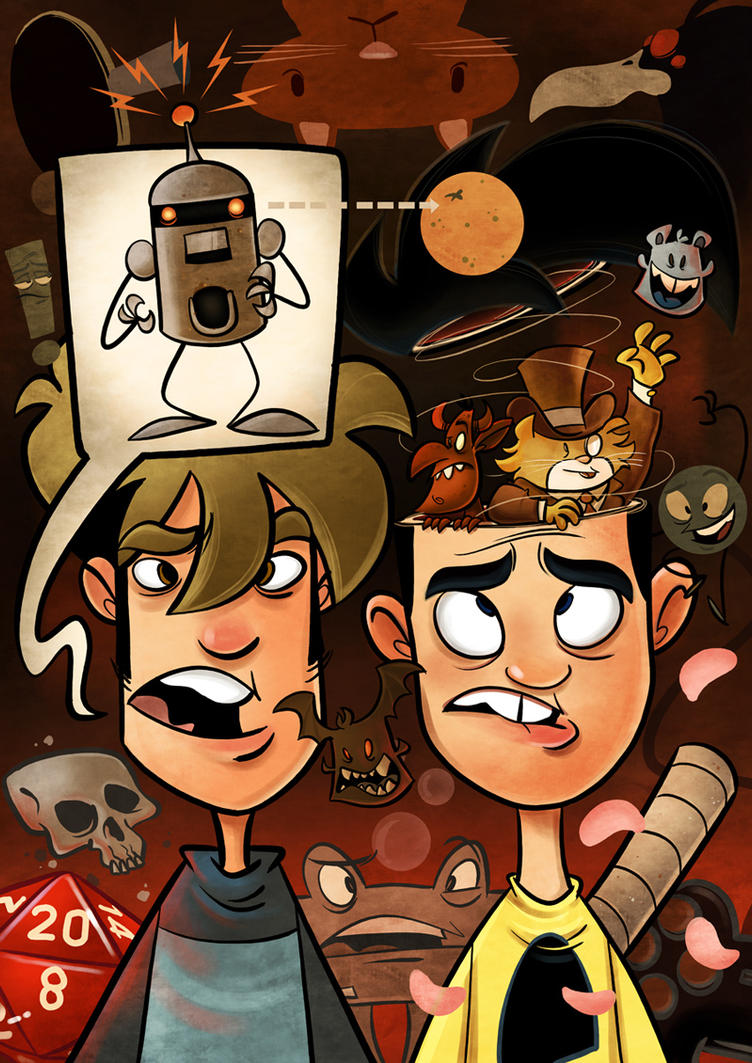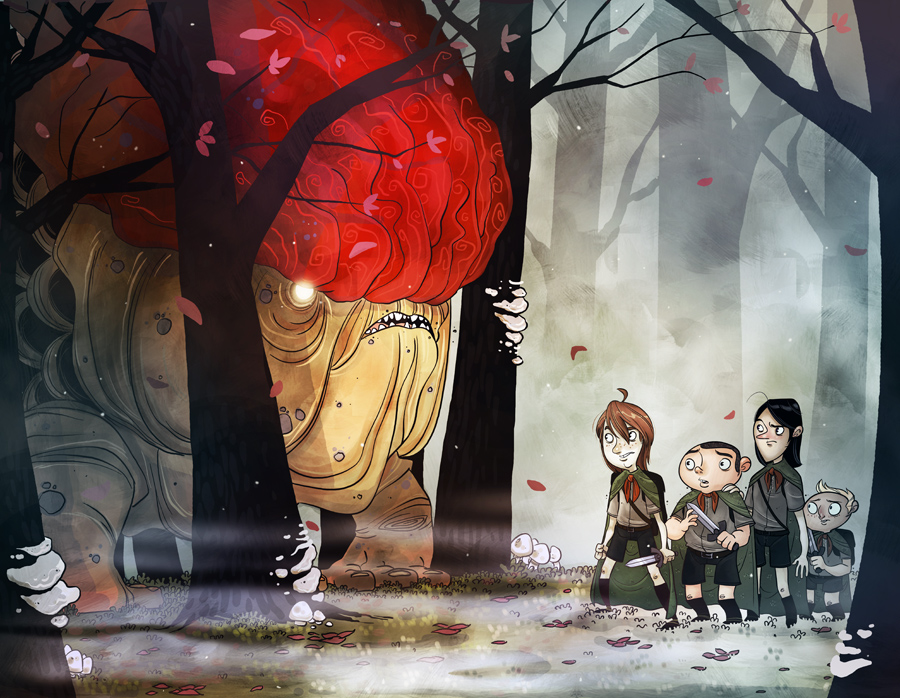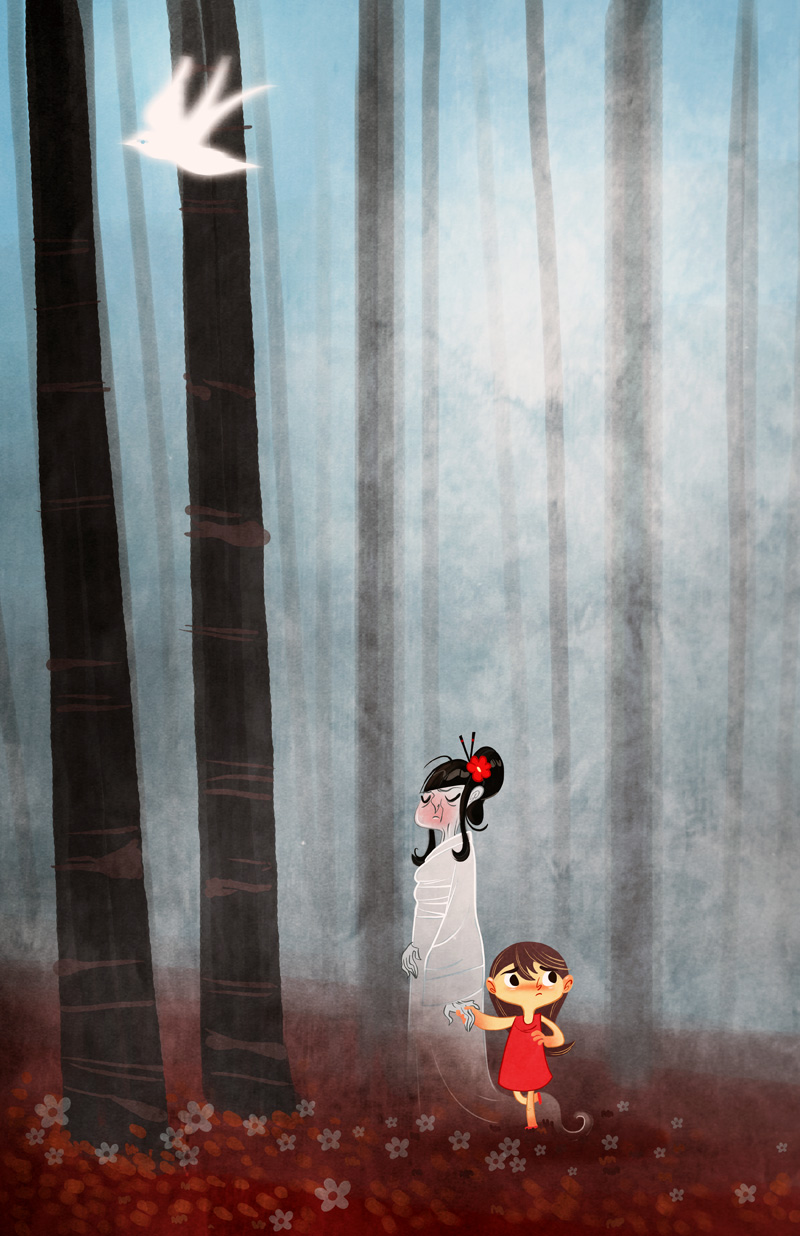 |
| Penny Arcade, by Mike Krahulik October 23, 2008 |
I could go on and on, about how they branched out into books, games (both digital and analog), conventions, a television network (does it still qualify as television if it is exclusive to the web?) and a full-blown charity that is so incredibly noble that it can actually rekindle a person's hope in humanity. Did you know they actually have their own line of clothing as well? I don't mean t-shirts here either. I mean an actual clothing line that is aimed at a specific market demographic.
Like I said, I could speak at length about the incredible kingdom they have created. However, that has already been touched upon in so many other forms, that it is pointless for me to retread on that ground. Furthermore, if you are reading this, then there is a good chance that you have taken more than one road-trip down the information superhighway, and have inevitably heard some mention of Penny Arcade. Instead, I want to talk about what Penny Arcade has done for the comics medium and what it has taught me.
ANOTHER NOTE - Before I continue, I want to establish some shorthand. From hence forth, Tycho shall refer to Mr. Holkins, Gabe shall refer to Mr. Krahulik, VG will be shorthand for video games, and PA will refer to the overall entity of Penny Arcade.
1 - Patience and persistence pays off, but don't be afraid to experiment
 |
| Lookouts, by Mike Krahulik - January 15th, 2010 |
Art does not sprout fully formed from the artist's head like a Grecian goddess, nor are artists born with an inherent talent or style. Everything that an artist produces that is aesthetically beautiful takes time and effort. Gabe is no exception.
If you take just a quick glance at the PA daily strip, and you may take for granted the time and effort that goes into it. It's not the hours of time Gabe spends drawing each strip, but rather the years of dedication that show up in every panel. The current look of the average PA strip took years to chisel out of nothing.
 |
| The original Lookouts strip from June 10th, 2009 |
 |
| The Girl and the Ghost, by Mike Krahulik November 19th, 2009 |
About a six months after the debut of the Lookouts, Gabe returns to the fertile forest playground with a solo piece that could easily be a fusion of the original strip and The Girl and the Ghost.
To often, artists can drown in the boredom of their style. Though some critics may balk at an artist's shift, it is necessary for any creative person to breath and experiment, if for no other reason than to improve upon what they already produce. In the case of PA, I am thankful that Gabe takes the time to produce solo work, because without it, the adventurous, long-form jaunts, such as Lookouts and Automata, may not exist; and though I may wish to see more long-form narrative from Tycho and Gabe, I am more than happy to take what they provide over having nothing at all.
 |
| Automata, from June 12, 2009 |
2 - Creating comics can be applied to the greater good

Growing up, I loved comics. The art, the action, the writing - I loved every aspect of the medium. What I loved most were the morality lessons that were found within the pages of X-Men and Avengers. X-Men taught me that people are people, and you shouldn't discriminate based on their differences. Avengers taught me that you must stand up for what you believe is right, even if the opposition is bigger or more powerful. In essence, comics made me want to make a better world so much that I took the following, self-written oath, and still stand by it to this day: I SWEAR BY MY LIFE to change this world for the better!
In 2003, PA created Child's Play as a response to the fallacy of VG's influencing youth towards violent behavior, and I had just started college. Through intense study of writing and art, I had decided that comics were the alpha and omega of broadcasting ideas from one human to another. I was so convinced by this fact that it became the central thesis of my entire college education. By my senior year, with months left before graduation, I was infected by the same idealism that hits most college students earlier in their student career. I remembered my oath, and realized that I had been training myself all wrong. Imagine if Batman vowed to avenge the death of his parents by waging war on crime, and then four years later winds up with an art degree and no idea how to fulfill his goals because he was distracted by the shimmering allure of comics. To exacerbate an already embarrassing situation, I had just received a rejection letter from the internship I had foolishly banked the entirety of my future plans on. With graduation fast approaching, I had no idea what I was going to do after school. Instead of devising any concrete plans, I sat in my Computer Science class and gorged on PA.
Whether I had forgotten, never known, or just hadn't put the pieces together, PA had already created the solution to my problem. They had leveraged their success into actual charity. They weren't just giving money for others find solutions. They were giving money, raising money, and making the solutions themselves. In the case of Child's Play, they were raising money to purchase VG's and toys for the children's wards at hospitals to make what is a genuinely frightening play a little less scary for kids who had to be there.
By themselves, comics may not be able to cure diseases or stop wars. They can make the world a little less frightening through their own accord, but if used wisely, they can assist in collecting the resources necessary in stopping social ills and direct them towards the organizations that can.
3 - The future is nothing if not an echo of the past
One of the oft-overlooked cornerstones of PA is the commentary by PA co-creator Tycho. A person who has only read the comics themselves can be forgiven if they view PA as nothing but a series of dick-and-fart-and-VG jokes that can appeal to the masses. Inexcusable are critics who judge PA based on the jokes alone. To do so would be akin to calling Shakespeare or Mozart hacks because you believe the entirety of their work revolves around basal humor.
Tycho is a writer of immeasurable talent who is able to connect with the audience. Like Shakespeare or Dickens, he weaves the narrative of everyday life together with what the audience wants, with what the audience relates to. In fact, much like Dickens, Tycho is able to produce profusely on the perfunctory and still make you care. His interests aren't solely based in and around VG culture, but transcends the black hole of mass media and steeps itself in everything from Milton to Dungeons and Dragons.
What is a writer if his work doesn't resonate with the audience? The short answer is obsolete, but in reality, would they be a writer at all? Like all the writers of the past, Tycho could write to satisfy critics, but doesn't, because the critics aren't the target. He just writes like others breath. He, like Dickens, is the voice of the public; his words are a tapestry of the era.





